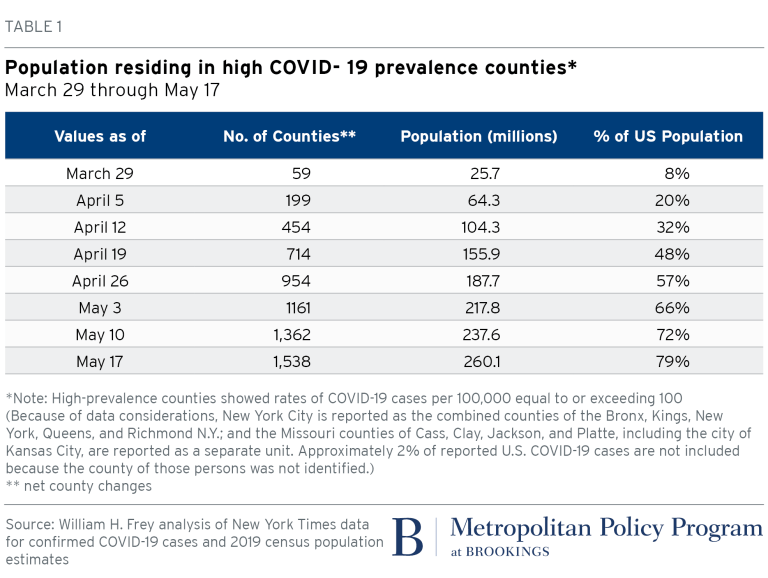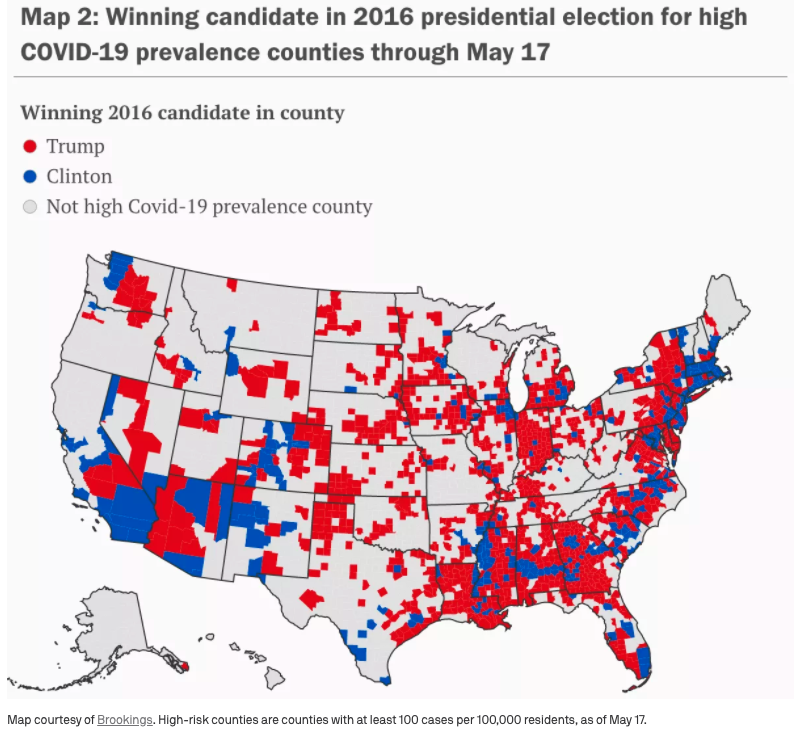A study from the Brookings Institution looks at counties that have newly been designated as having a “high prevalence” of COVID-19. These “high-risk” counties have at least 100 active cases per 100,000 people. The results are interesting:
- Starting on March 29, there were 59 counties considered high-risk, which represented 8% of the US population.
- Ending on May 17, the number of counties reached 1,538, with 79% of the US population.

Clearly, the virus is still spreading. Initially, COVID-19 was much more prevalent in urban areas, which tend to be primarily Democratic. But recently, this has changed:
- For the last 4 weeks, these new high-risk counties are more likely to have voted for Trump than Clinton in 2016. There were 697 new counties that voted for Trump, but only 127 that voted for Clinton. They are also concentrated in the South and Midwest, especially Texas (52 counties), Georgia (45), Virginia (36), Indiana (40) and Iowa (37).
- In the most recent week, the counties becoming high-risk favored Trump by a 12% margin. They are also much less urban and less racially diverse (fewer minorities and foreign-born people, more whites).

There is a notable partisan split in the recent spread of the virus. This tracks the fact that “Republicans are more willing than Democrats or Independents to attend in-person gatherings.”


One Comment
Wow, what a useful perspective. Great spotting, IK!